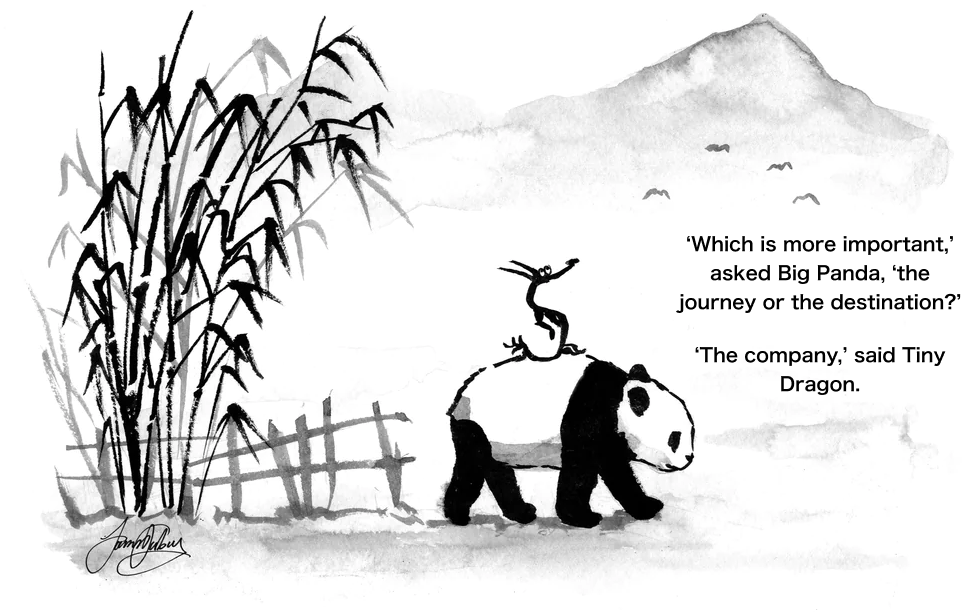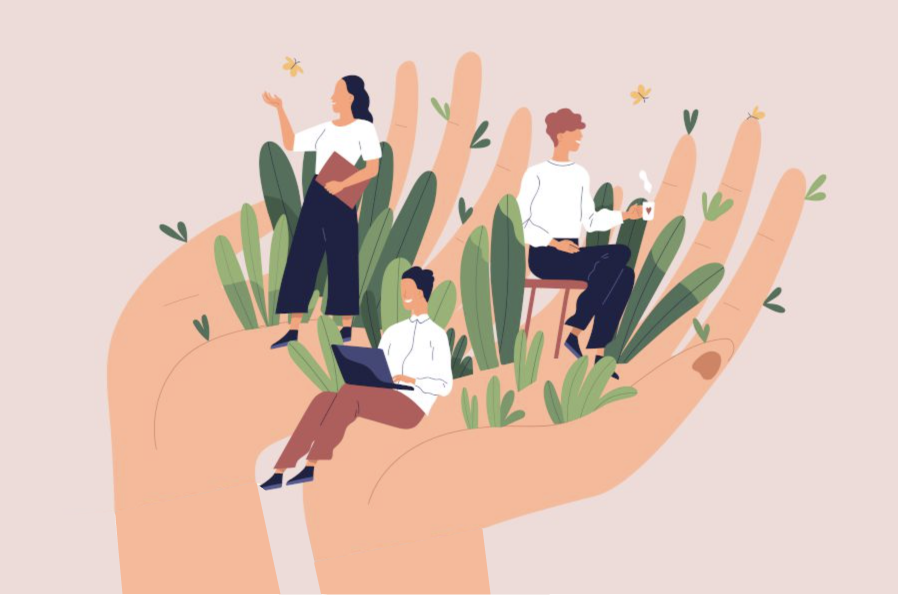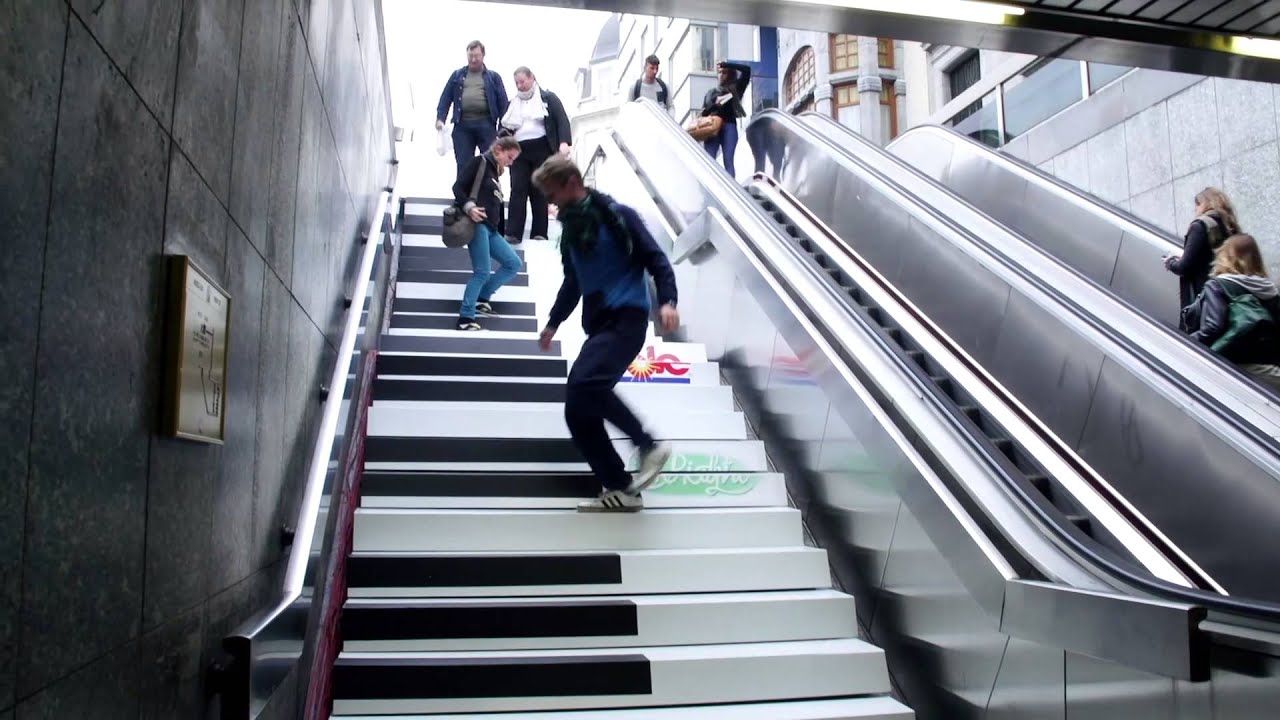As designers, we all have superpowers. As a design leader, it’s my job to draw those superpowers out, both from individuals and from teams.
Over the last decade, through my successes and failures as an entrepreneur and design leader, I’ve learned a few lessons about building teams. I don’t think these are all the answers for everyone, but they are the learnings I’m using as I try to create the best environment for these superheroes.

1: Understand people 🙎🏼♂️👩🏾🦰🧔🏼♂️👱🏻♀️👳🏻♂️
Earn trust
Leadership starts with building trust. If individuals trust you, then everything can be solved. A trustworthy relationship would mean that people will comfortably express themselves and will collaboratively grow. Earning trust is a marathon and requires a transparent and genuine approach.
We all are humans
Our personal and professional life run in parallel. Time spent on our day-to-day projects is almost ephemeral in the larger context of life. When we acknowledge this, then we prime ourselves for building long-term relationships and not just short-term outcomes.
We all are unique
Everyone has their own style of working. Even when the outcome and the quality might be similar, the method might be very different for two individuals. Our simple personal preferences make up who we are. Understanding each individual’s style and respecting it’s foundational to inclusion and leadership. It makes sure that everyone feels important and supported through the journey they wish to take toward an outcome. It also opens a window to surprise ourselves with learnings and outshine our (assumed) potential.
The chemistry between individuals
Equally important to understanding an individual is understanding the dynamics within a group of individuals. Often enough, the best of the talents might not find a fit while working with each other. And equally often, you might find teams outperform expectations. “1+1=11″ when individuals gel well.
2: Create a safe space for them 🎭🤝❤️
There are no good or bad emotions. A culture that encourages emotional expression enables a safe space for experimentation and growth.

Build an expressive team
The comfort to express (emotions/opinions/pushbacks/ideas) means that the group has a relationship of trust and belonging. Analogous to talking to users, if anyone is expressive among us, then it means they feel comfortable and that they are putting effort to think deeply about the situation. It opens a window to understanding others’ context clearly, to be empathetic and compassionate. Such a culture creates a safe space for work. The cultural aspect goes for everyone i.e being expressive about your own vulnerabilities contributes equally towards it (and towards your own growth).
Encourage wild ideas
Expression can be subtle or blunt, it can sound like a daydream or an emotional vent, but as long as it doesn’t disrespect anyone, it’s helpful. Especially in the creative field, the more candid one can be, the more creative one can be. On one extreme, outbursts of excitement can elevate the possibilities and hence need to be encouraged without judgment. While on the other side of the spectrum, expressing our vulnerabilities can create a safety net for taking risks, for keeping things relatable and humane for everyone.
We have 2 eyes, 2 ears, and 1 mouth, we should use them in the same proportion in a discussion.
Iles Crawford
Share early, share often
In a culture of trust, people will feel safe to express themselves early and often. They will share their works in progress and will co-create the outcome as a team. They will feel safe to get ideas on the way they are approaching a problem, the process they are following, other ways it has been tried, or any dependencies they might have missed out upon. Sharing early is not only a measure of a healthy team but is an important tool in empowering individuals with the power of many.
Good practices are contagious
Continuing on the previous point, peer learning is the best learning. The leader (definitely) doesn’t have all the answers, they just need to have the most relatable answer, and that’s where peers come in. Create a space where one can learn from others, a culture where everyone has their own superpowers while can also grow and add other’s powers to their armory.
It takes a village
Teams, and not individuals, deliver the outcome. As mentioned earlier, individual skills need not necessarily add up. A team needs to be a cohesive unit that can listen to each other, can comfortably overlap and debate about each other’s work, can partner early, and set rituals that create a safe and productive space for everyone. Creating a boundary-less team requires one to see roles as interchangeable, have co-ownership of the process and the outcome, celebrate examples of the initiative beyond one’s function, and build strong relationships with leaders across functions. As teams change often, leadership at an early stage is especially helpful in setting the correct expectations across all the members.
3: Supercharge their growth⚡🏅🏆⭐️
A teacher wins through her students, much after she has taught them.
Show what success looks like
Often, individuals have the skills and know-how but might not have tasted success yet. Especially at an early stage of a project, the ambiguity can be overwhelming for someone. Giving clarity on the outcome (i.e. the impact and not the solution) helps everyone to focus on the problem and not on a predetermined solution. Their job is to not take orders but to share their opinion and lead with them. Partner with other leaders, and identify and prioritize success parameters early in the process of a project.
Cheer
Candid appreciation is underrated for the power it holds. Acknowledging effort (and not necessarily the outcome) assures the recipient of the support they have in their journey. This motivates the recipient to go above and beyond and motivates others to support their effort. And, almost surprisingly, it unlocks the door for everyone to try something new together. Always cheer everyone, your directs, dotted, stakeholders, and the village. Make everyone shine, and give visibility to their work across wide forums.
Give quick wins
A great way to move a mountain is to start with a single step. A small win is usually easy to achieve. It can be connected to a larger goal. This win usually unlocks possibilities and builds momentum for the least, but most importantly, it motivates an individual. One feels comfortable and confident, especially early in their role, when they don’t have something to show for it. A culture of quick wins primes an individual, or a team, for delivering things beyond their own expectations.
Slow it down but keep moving
Sometimes things can get hard. We can be blocked by unknown dependencies, or, can be overwhelmed by pace. Such moments can demotivate, can create friction, or can start a downward spiral altogether. It’s important to identify these and act fast, possibly with some positivity. Slowing things down for someone, and looking for small wins can help. Often times such hardship is situational and solving it at one’s pace builds confidence for such situations in the future, making one stronger as one grows.
Focus on the craft
Be stubborn about the quality of the craft and flexible about the outcome achieved. This aligns well with any individual’s goal of strengthening themselves for the long term. Identify strengths and opportunities for each individual. Give feedback on these and keep aligning on the progress.
Build a vision
As someone more experienced and able to see things from a distance, or simply being someone with more visibility, you can be instrumental in helping individuals to connect and compound their strengths over time. Reflect upon how you would create your own career path if you were in their place, reflect upon the superpowers that an individual has, think big, and create a vision for the individual. Co-creating a bold and clear vision can help individuals unlock their growth potential. At a tactical level, it’s useful to plan clear milestones that add up toward the end goal and (strictly) say no to distractions. The latter is especially relevant in the creative field as we tend to wander with impulses more often than expected.
Designers have a superpower
Unlike any other role, designers can turn words into visuals in a very short time. They can envision and visualize a bold and connected story of how things can be in the future. The visuals give teams a critical opportunity to negate ambiguity early on. This sets a platform to get motivated, critique, evolve, and align upon a common possibility. And it gives designers a critical opportunity to influence, and speed up their own growth. Encourage designers to use this superpower early on in a project, to de-prioritize dependencies such as product requirements, tech constraints, timelines, etc, and to create an opinionated vision. Lead with this initiative to give wings to a project, and to their career.
————
All things said, managing people (and managing life!) will be unpredictable. Remember to have fun and make friends while you go on this exciting journey.



